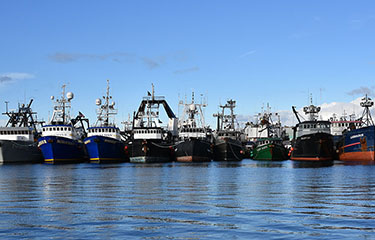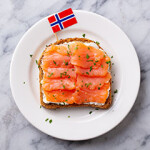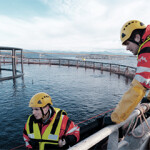CARES Act relief funding straggles into 2021

As 2020 drew to a close, one-third of the USD 300 million (EUR 246 million) in aid set aside for the fishing industry through the Coronavirus Aid, Relief, and Economic Security Act remained for delivery as states labored to complete distributions.
Lagging farthest behind were Alaska and Washington state, the nation’s top volume seafood producers, and at USD 50 million (EUR 41 million) each the largest designated shares of the aid package. The states finally released their final draft spending plans on 7 December and 8 December, for approval by NMFS.
This week the 15 January deadline is approaching for fishermen to apply for the U.S. Department of Agriculture Seafood Trade Relief Program, a USD 530 million (EUR 436 million) package to help compensate for an estimated USD 250 million (EUR 205 million) in losses in trade wars with China and the European Union.
After the Department of Commerce announced its system for distributing direct aid, coming up with state-by-state plans lagged well into the fall. In Alaska there was protracted public debate over how to allocate equitably the aid among the state’s vibrant and varied fisheries. There was wide disagreement over who should qualify – including Alaska residents and its large fishing workforce with homes in other states, and how to split the money between commercial fishing, processing and the recreational charter and guide sectors. One chafing point was state officials’ intent to give the charter sector a bigger share than the 5.5 percent recommended by NMFS.
“We agree that there is not enough funding to make each business whole,” the United Fishermen of Alaska wrote in a 22 October letter urging the state Department of Fish and Game to extend public comments on the then-draft plans.
“We also note that Alaska’s commercial fishery sector accounts for 60 percent of all U.S. fisheries harvest annually, which is why Alaska (and Washington’s) shares were the largest of any states. As the largest private employers in the state, we ask that you provide substantive economic impact information that justifies the reallocation or that you revise the spend plan to fairly allocate the funds across all sectors.”
In the final draft plan, Alaska officials proposed that “non-resident commercial harvesters that meet all eligibility requirements and do not apply for assistance in another state or territory may apply to the state of Alaska,” while operators of at-sea processing vessels must apply in their home port states.
Home port refers to the address associated with the appropriate Commercial Fisheries Entry Commission vessel permit. Non-resident charter guides and businesses that do not possess a business license from the state of Alaska must apply to their state of residence.
Washington state released its final plan the next day, after weeks of virtual meetings with fishermen, shellfish growers and processors to learn about the effects of COVID-19 on those sectors. They met also with the state’s 24 treaty tribes to hear how the pandemic affected subsistence, cultural, and ceremonial fisheries.
“The pandemic had early and dramatic impacts to shellfish and commercial fishing businesses. These activities play an outsized role in our state, especially in our tribal and natural resources dependent economies,” Washington Governor Jay Inslee said in announcing the plan. “I am pleased that we will soon have more assistance available to help these hurting businesses recover.”
Under Washington’s plan, fishing industry members will be eligible to apply if they experienced a gross revenue loss from January through July 2020 greater than 35 percent of their 2015-19 average. Washington-based fishermen who work in Alaska are eligible to take that option for applying in their home state.
The Pacific States Fisheries Commission is handling applications for Washington fishermen, as the commission did for Oregon. Those had to be postmarked by 8 September, but it’s been taking the commission longer than expected to resolve applications that had errors or omissions. Still the commission anticipated that Oregon checks would be mailed before the end of December.
Oregon’s plan called on applicants to report lost income as a result of COVID-19, with those losses to be totaled and individual awards to be equally scaled based on the reimbursement funding available.
California developed a system of 11 levels for determining compensation that also considers fees fishermen pay to the state. The system was complicated but also resulted in California fishermen getting some of the first checks in November, Pacific Coast Federation of Fishermen’s Associations Executive Director Mike Conroy said.
“PCFFA very much appreciates the efforts of the California Department of Fish and Wildlife in working hard to ensure California’s impacted fishery participants were the first to receive CARES Act funds,” the group said in a statement. “We also applaud their outreach to industry in developing a spend plan that, while not perfect, was fair.”
Gulf of Mexico fisheries highly dependent on the national restaurant and regional tourist industries were struck hard by the pandemic, which early on crashed shrimp and oyster sales in Louisiana. The deadline for applying for shares of the state’s USD 14.6 million (EUR 12 million) in CARES aid was extended to 23 November as fishermen dealt with hurricane season on top of it all.
Mississippi is getting just over USD 1.5 million (EUR 1.23 million) for aid, for fishermen meeting the NMFS threshold of economic revenue losses greater than 35 percent compared to their prior five-year average.
“We recently completed our state’s application process that had an application deadline of [8 December]. Our organization provided application assistance to approximately 60 individuals and businesses,” Mississippi Commercial Fisheries United Director Ryan Bradley said.
“As of [15 December], the Mississippi Department of Marine Resources reported receiving 164 commercial, 34 charter, and 13 dealer applications for CARES Act assistance from eligible applicants. A total of 18 commercial, seven charter, and five dealer applications were received but deemed to be ineligible,” Bradley said.
The first checks are expected to go out in early 2021, “and may be followed by a supplemental disbursement under certain circumstances,” he said.
As in Oregon, the cumulative losses reported by fishermen, compared to the amount of funding available, will determine the final numbers for scaled pay-outs. However, so far “little information has been relayed to applicants on just how much of the funds they will receive,” Bradley said.
Massachusetts received almost USD 28 million (EUR 23 million) in funding, and checks were mailed out to all applicants by 10 November. But the groundfish sector was already disadvantaged in the application process by its longer-term problems before the pandemic, Jackie Odell, executive director of the Northeast Seafood Coalition in Gloucester, Massachusetts, said
“Groundfish was greatly impacted by loss of markets and restaurant closures, but the fishery was already in a reduced landings due to significant regulations,” Odel saidl. “So, the 35 percent loss over the five-year average – during that short window – was a bar that many of our members fell slightly under so did not qualify for assistance.”
Other aid efforts, including the Paycheck Protection Program, were “a boost during a very difficult time,” she said.
Maine’s allocation of USD 20.1 million (EUR 16.5 million) was sending checks out to as many as 2,700 fishermen, aquaculture producers, seafood dealers and processors, and charter boat operators for delivery by 1 January.
Maine’s Department of Marine Resources is also using USD 1 million (EUR 822,836) of the CARES Act funds to launch a Maine Seafood brand to promote all of the state’s commercial species to a growing domestic market.
“It’s a domestic campaign,” eff Nichols, director of communications for the department, said. “Initially we’re focused on the Northeast. That’s based on information we got from dealers and research we’ve done to identify where Maine seafood is being distributed and is available.”
The department is hoping this project will help expand markets across the state’s industry, including stakeholders who were not eligible for relief but who were still affected by market shutdowns.
“We’re working with dealers at this point, so we understand their distribution and how they make seafood available to consumers,” said Nichols. “We’re going to be doing some storytelling about the industry for consumers going forward.”
Over the course of the summer, representatives in the department reached out to a wide swath of industry stakeholders in the state, “from dealers to association representatives to people who have a level of expertise in Maine seafood marketing and distribution,” Nichols said.
Reporting by Kirk Moore and Jessica Hathaway
Photo courtesy of Doug Stewart






Share